Each Western Culture Has a Distinctive Context Intro to Art Quiz

History has no natural divisions. A woman living in Florence in the fifteenth century did non think of herself equally a adult female of the Renaissance. Historians split up history into large and small units in order to make characteristics and changes clear to themselves and to students. It's important to remember that any historical period is a construction and a simplification. Below are some important basics to get you started.
Western culture, the bailiwick of this essay, is a phrase worth thinking near. West of what? West of who? The term is non geographic, and only gained in popularity in the 19th and 20th centuries. This is a concept, a lineage that ties Europe's long history to the aboriginal cultures of the Mediterranean and and so push back to prehistory. As you read the timeline below, please keep in heed that this is only 1 of many stories, and that equally momentous developments accept occurred in Africa, Asia, the Americas and in the Pacific.
Prehistoric (before c. 3000 B.C.E.)

Nude Woman (Venus of Willendorf), c. 28,000-25,000 B.C.E., Limestone, 4 one/4″ high (Naturhistorisches Museum, Vienna), photograph: Steven Zucker (CC By-NC-SA 2.0)
The term "prehistoric" refers to the time earlier written history. In the West, writing was invented in ancient Mesopotamia only before 3000 B.C.East., so this period includes visual civilisation (paintings, sculpture, and architecture) made before that date. The oldest decorative forms we tin can recognize every bit art come from Africa and may date back to 100,000 B.C.Eastward. In contrast, the oldest cavern paintings known are most 40,800 years old, and although we used to think that only our species, Homo Sapiens, made art—anthropologists now speculate that Neanderthals may have made at least some of these very early images.
The Neolithic revolution, one of the near profound developments in all of homo history, occurs during the Prehistoric Era. This is when our ancestors learned to farm and domesticate animals, assuasive them to give up their nomadic means, and settle downwardly to build cities and civilizations.
Aboriginal (c. 3000 B.C.E. to c. 400 C.E.)
This period includes the great early civilizations of the aboriginal About E (retrieve Babylonia), aboriginal Egypt, ancient Hellenic republic, the Etruscans, and the Romans—everything that comes after the invention of writing and before the fall of the Roman Empire. Keep in mind the disintegration of the Roman Empire took centuries, but to simplify, c. 400 volition do.

Aboriginal Greek sculpture of Zeus or Poseidon, c. 460 B.C.E., bronze, 2.09 yard high, Early Classical (Severe Style), recovered from a shipwreck off Cape Artemision, Greece in 1928 (National Archaeological Museum, Athens), photograph: Steven Zucker (CC Past-NC-SA 2.0)
It was during this period that the aboriginal Greeks first applied human reason to their observations of the natural world and created some of the primeval naturalistic images of homo beings. This menses is often credited with the nascence of Western philosophy, mathematics, theater, scientific discipline, and democracy. The Romans in turn created an empire that extended across most of Europe, and all the lands that surround the Mediterranean Sea. They were adept administrators and engineers and they saw themselves every bit the inheritors of the great civilizations that came before them, especially, Greece and Egypt (which they conquered).
It'south of import to remember that although history is frequently presented as a series of discrete stories, in reality narratives ofttimes overlap making history both more circuitous and more interesting. For example, information technology was also during the Roman Empire that the figure we now telephone call Jesus lived. Jesus and his apostles were Jewish men living in what is today Israel, only which was so function of the Roman Empire.
Center Ages (c. 400 C.Eastward. to c. 1400 C.E.)
The first half of this thousand-yr menses witnessed terrible political and economical upheaval in Western Europe, as waves of invasions by migrating peoples destabilized the Roman Empire. The Roman emperor Constantine established Constantinople (at present Istanbul, Turkey) as a new capital in the East in 330 C.E. and the Western Roman Empire broke apart presently after. In the Eastern Mediterranean, the Byzantine Empire (with Constantinople as its uppercase), flourished.

Christ (detail), Deësis (Christ with the Virgin Mary and John the Baptist), c. 1261, mosaic, imperial enclosure, due south gallery, Hagia Sophia, Istanbul, photo: Steven Zucker
Christianity spread across what had been the Roman Empire—even among migrating invaders (Vandals, Visigoths, etc.). The Christian Church, headed by the Pope, emerged equally the nigh powerful establishment in Western Europe, the Orthodox Church dominated in the East.

Byzantine Empire in 650
It was during this menstruum that Islam, i of the three keen monotheistic religions, was born. Within piddling more than a century of the death of the Prophet Muhammad in 632 C.Due east., Islam had become an empire that stretched from Espana beyond North Africa, the Middle and Near East, to India. Medieval Islam was a leader in science and applied science and established some of the globe'southward not bad centers of learning (Cordoba, for example). Islamic culture played an of import role in preserving and translating ancient Greek texts at a time when much of the knowledge created during the ancient world was lost.
Petrarch (a writer who lived in the 1300s) described the early Medieval catamenia every bit the "Dark Ages" considering to him it seemed to exist a period of declining human achievement, especially when he compared it to the Ancient Greeks and Romans. The "Middle Ages" got its proper noun because Renaissance scholars saw it every bit a long barbaric period that separated them from the groovy civilizations of aboriginal Greece and Rome that they both celebrated and emulated.

Young nobles in procession in the Très Riches Heures du duc de Berry, (painted by the Limbourg Brothers), folio five, verso: May, 1412-16, manuscript illumination on vellum, 22.5 x xiii.6 cm (Musée Condé)
Medieval gild was organized into conspicuously defined strata. At the top was the king. Below were bottom nobles. These lords in plow, ruled over peasants and serfs (the vast majority of the population). Serfs were laborers who were permanently bound to work the land owned by their lord. The basic unit of this system, known as Bullwork, was the lord/vassal relationship. The vassal would provide labor (in the fields or in boxing) to the lord in exchange for land and protection. Mobility between strata was very rare.
Of course, the yard years of the Middle Ages saw the creation of many great works of art and literature, but they were dissimilar from what Petrarch valued. The works of fine art created in the Middle Ages were largely focused on the teachings of the Church building.
Information technology is important to recall that during the Centre Ages it was rare that anyone except members of the clergy (monks, priests, etc.) could read and write. Despite expectations that the globe would terminate in the year ane,000, Western Europe became increasingly stable, and this flow is sometimes referred to as the Late (or High) Center Ages. This period saw the renewal of large calibration edifice and the re-establishment of sizable towns. Monasteries, such as Cluny, became wealthy and important centers of learning.
Within the Heart Ages, there are subdivisions in art history, including Early Christian, Byzantine, Carolingian, Ottonian, Romanesque and Gothic. When we look closely at much of the fine art and politics of the 1,000 years of the Heart Ages, nosotros find a complex and ongoing relationship with the retentiveness and legacy of the ancient Roman empire and this is the foundation for the Renaissance.
Renaissance (c. 1400 to 1600)
In role, the Renaissance was a rebirth of involvement in ancient Greek and Roman civilisation. It was besides a period of economic prosperity in Europe—particularly in Italy and in Northern Europe. In art history, we study both the Italian Renaissance and the Northern Renaissance. We talk well-nigh a way of looking at the globe called Humanism, which—at its most basic—placed renewed value on human noesis, and the feel of this world (as opposed to focusing largely on the heavenly realm), using ancient Greek and Roman literature and art as a model.

Plato, Aristotle and other ancient philosophers and mathematicians depicted in Raphael's School of Athens, fresco, 1509-1511 (Stanza della Segnatura, Papal Palace, Vatican)
There are but a handful of moments in history that we can point to that inverse everything. The invention and adoption of the printing press was certainly one. As a result of the wider availability of books, literacy rates in Europe dramatically increased. Readers were empowered and in many ways nosotros can trace the origin of our own information revolution to 15th-century Germany and Gutenberg'due south first printing press.
In 1517 a German language theologian and monk, Martin Luther, challenged the authority of the Pope and sparked the Protestant Reformation. His ideas spread speedily, thanks in role to the printing press. By challenging the power of the Church, and asserting the say-so of individual conscience (it was increasingly possible for people to read the bible in the language that they spoke), the Reformation laid the foundation for the value that modern civilisation places on the individual.
It is also during this period that the Scientific Revolution began and ascertainment replaced religious doctrine every bit the source of our understanding of the universe and our place in it. Copernicus up-ended the ancient Greek model of the heavens past suggesting that the sun was at the heart of the solar organisation and that the planets orbited in circles around information technology. However, there were nonetheless issues with getting this theory to match observation. At the beginning of the 17th century, Kepler theorized (correctly!) that the planets moved in elliptical orbits (not circular ones) and that the speed of the orbits varied according to the planets' distance from the sun. So much for the ideal geometries of the Greeks!
Early on Mod (c. 1600 – 1800)
It might seem strange to date the offset of the "modern era" to so long ago, but in many ways it was the scientific, political and economical revolutions of the seventeenth and eighteenth centuries that accept about shaped our own club.
Art historians study the Bizarre manner of the seventeenth century. This was a time of extended and often vehement conflict between Catholics and Protestants fabricated all the more complex because of the growing power of Europe's smashing monarchies. It was a time when nations grew in size, wealth and autonomy and when national boundaries were hardened, prefiguring the countries we know today (France, Spain and England for example). This was also a period of colonization, when European powers divided and exploited the globe's natural resource and people for their own do good (recall peculiarly of the African slave trade, or the subjugation and forced conversion of the indigenous peoples of the Americas).

Hendrik Cornelisz Vroom, The Return to Amsterdam of the 2d Expedition to the East Indies, 1599, oil on sheet (Rijksmuseum)
The 1700s is often called the Enlightenment. In many ways, it furthers the involvement in the individual seen in the Italian Renaissance and more widely during the Protestant Reformation. Thinkers such as Rousseau, Voltaire and Diderot asserted our power to reason for ourselves instead of relying on the teachings of established institutions, such every bit the Church. In art history we study the Rococo and Neoclassical styles.
The American and French Revolutions date to this period. The emerging eye classes (and afterwards the working-classes) began a centuries-long campaign to gain political power, challenging the command of the aristocracy and monarchy. Successive reform movements (in this flow and the nineteenth century) and revolutions gradually extended the franchise (the right to vote). Previously suffrage had been limited to males who owned land or who paid a sure amount in taxes. Information technology was only in the 2d half of the nineteenth and the twentieth centuries that universal suffrage became the norm in Europe and North America.
Modern (after c. 1800)
Commercialism became the ascendant economic system during this menstruum (though information technology had its roots in the Renaissance). Individuals risked capital to produce goods in a currency-based market which depended on cheap, waged labor. Labor eventually organized into unions (latter-day guilds) and in this way, asserted considerable influence. More broadly shared political power was bolstered by overall increases in the standard of living and the first experiments in public education such every bit now we do with online maths tutoring.
Steam-powered machines and unskilled laborers in factories began to supplant skilled artisans. London, Paris, and New York led the unprecedented population growth of cities during this period, equally people moved from the countryside or emigrated to detect a college standard of living.

Pablo Picasso, Guernica, 1937, oil on sail, 349 × 776 cm (Museo Reina Sofia, Madrid)
The twentieth century was the most violent in history. Information technology included two world wars, the Common cold State of war, the dismantling of colonialism and the invention of the Totalitarian land. Dictators (Mussolini, Hitler, Stalin, Idi Amin, Pol Pot, the successive leaders of North korea, etc.) imposed extreme political systems that caused mass starvation, mass dislocations and genocide. At the aforementioned fourth dimension, the twentieth century was marked by the struggle for human rights and the rise of global commercialism.
Where artists had previously worked nether the instructions of wealthy patrons associated with the church building or state, in this period, art became part of the market economy, and fine art itself came to exist seen every bit personal cocky-expression. The high value placed on the individual, which emerged in ancient Greece and Rome and then again in the Renaissance, became the chief value of Western culture. Where artistic styles (for instance, Baroque) had once covered numerous artists working over broad regions and periods of time, in the late nineteenth and through the twentieth century, successive styles of art change with increasing speed and fracture into a kaleidoscope of individual artistic practices.
Where do we fit in?
Nosotros are immersed in our ain time and it can exist difficult to run into the world effectually us objectively. One of the modern definitions of an artist, in fact, is someone who is particularly insightful well-nigh their own cultural moment. Thanks to global commercialism, social media and the internet, we are more interconnected and interdependent than at any other time in history. Some see this as a utopian moment. With internet access, nosotros can all contribute to and do good from what is existence called the Data Revolution. For others, the prevalence of technology in our lives threatens our individuality and privacy, and reduces usa to a data point that can be monetized by corporations similar Facebook, Google, and Apple. I thing is certain, throughout the time periods sketched above, fine art has meant dissimilar things, and information technology is likely to exist differently defined in the time to come.
The history of humanity is recorded in our visual culture. Like the fate of previous civilizations, time will eventually destroy much of the visual culture that we are familiar with today. Futurity art historians will seek to reconstruct the world we at present alive in, to amend understand the nuanced meanings that are so familiar to usa. Perhaps someday an art historian will puzzle over an cyberspace meme, a Torqued Ellipse by Richard Serra, or school-yard graffiti.
Additional resource
There is no such thing as western civilization
Smarthistory images for educational activity and learning:

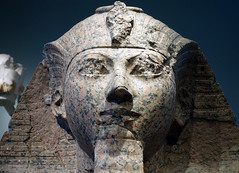

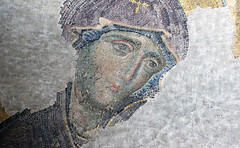
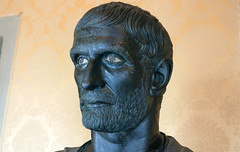
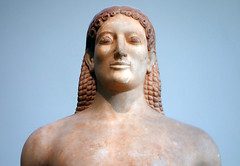
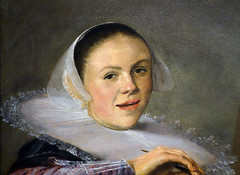
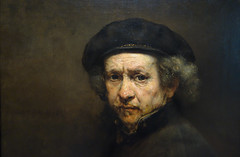
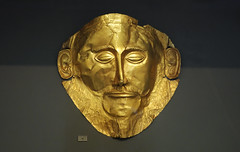

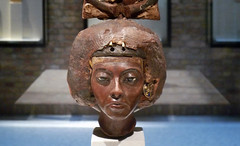


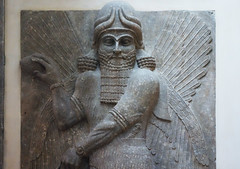
More than Smarthistory images…
Source: https://smarthistory.org/a-brief-history-of-western-culture/